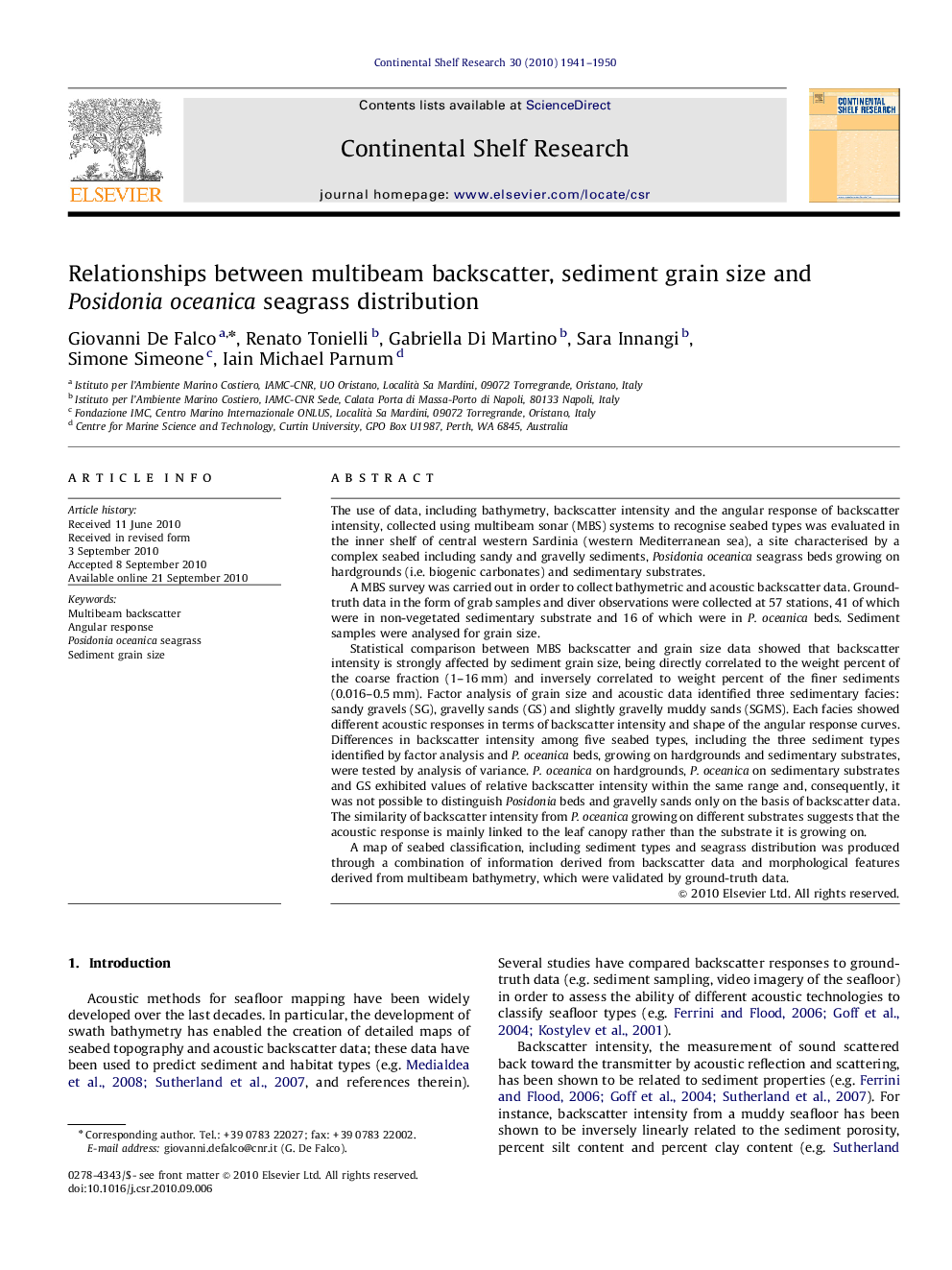| کد مقاله | کد نشریه | سال انتشار | مقاله انگلیسی | نسخه تمام متن |
|---|---|---|---|---|
| 4532816 | 1325149 | 2010 | 10 صفحه PDF | دانلود رایگان |

The use of data, including bathymetry, backscatter intensity and the angular response of backscatter intensity, collected using multibeam sonar (MBS) systems to recognise seabed types was evaluated in the inner shelf of central western Sardinia (western Mediterranean sea), a site characterised by a complex seabed including sandy and gravelly sediments, Posidonia oceanica seagrass beds growing on hardgrounds (i.e. biogenic carbonates) and sedimentary substrates.A MBS survey was carried out in order to collect bathymetric and acoustic backscatter data. Ground-truth data in the form of grab samples and diver observations were collected at 57 stations, 41 of which were in non-vegetated sedimentary substrate and 16 of which were in P. oceanica beds. Sediment samples were analysed for grain size.Statistical comparison between MBS backscatter and grain size data showed that backscatter intensity is strongly affected by sediment grain size, being directly correlated to the weight percent of the coarse fraction (1–16 mm) and inversely correlated to weight percent of the finer sediments (0.016–0.5 mm). Factor analysis of grain size and acoustic data identified three sedimentary facies: sandy gravels (SG), gravelly sands (GS) and slightly gravelly muddy sands (SGMS). Each facies showed different acoustic responses in terms of backscatter intensity and shape of the angular response curves. Differences in backscatter intensity among five seabed types, including the three sediment types identified by factor analysis and P. oceanica beds, growing on hardgrounds and sedimentary substrates, were tested by analysis of variance. P. oceanica on hardgrounds, P. oceanica on sedimentary substrates and GS exhibited values of relative backscatter intensity within the same range and, consequently, it was not possible to distinguish Posidonia beds and gravelly sands only on the basis of backscatter data. The similarity of backscatter intensity from P. oceanica growing on different substrates suggests that the acoustic response is mainly linked to the leaf canopy rather than the substrate it is growing on.A map of seabed classification, including sediment types and seagrass distribution was produced through a combination of information derived from backscatter data and morphological features derived from multibeam bathymetry, which were validated by ground-truth data.
Journal: Continental Shelf Research - Volume 30, Issue 18, 31 October 2010, Pages 1941–1950